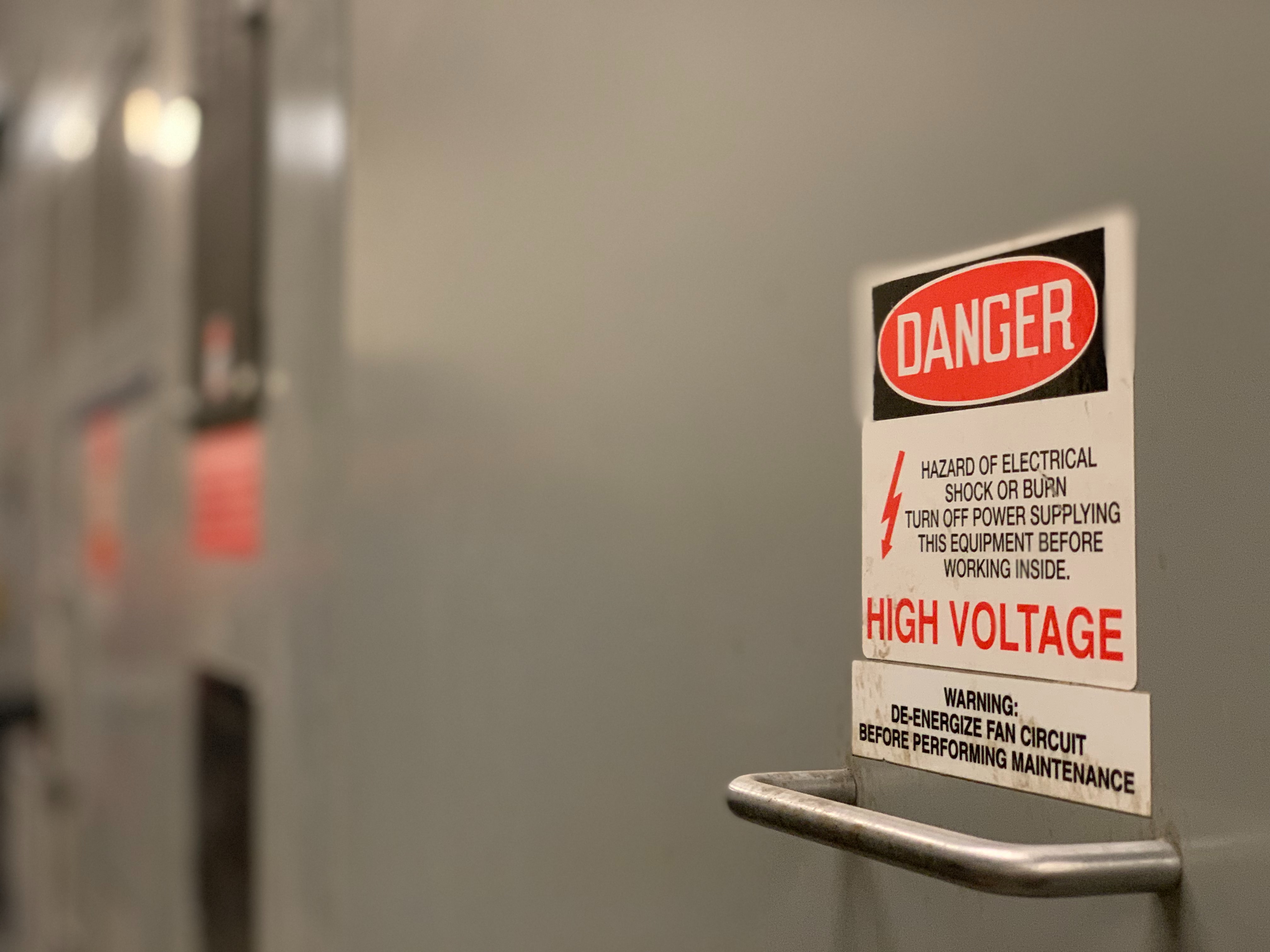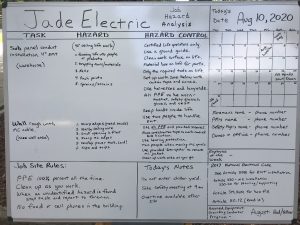Job Hazard Analysis for Electricians

By: Dave Varga | Oct 05, 2020
Each morning your average electrical foreman and crew begin their day with a meeting. This Job Hazard Analysis (JHA) meeting is the most important meeting of the day and can mean the difference between life and death. Many of the workers are barely awake and just halfway through their energy drink. Some foremen will choose to rush through or even skip this event so they can get a jump start on the day. The owners of the company, the safety manager, and the elite crew members want to have this meeting and want it to be meaningful. OSHA says you should perform this JHA meeting every workday to keep your workers safe. Let’s look at how we can start the day off right.
Why Are We Having This Meeting?
The Occupational Safety and Health Administration (OSHA) requires that electrical construction companies perform an analysis of the job site to identify the hazards of each work task. The hazards are identified, a plan is made on how to avoid these hazards, and then then all the information is presented to the workers in order to keep everyone aware and safe.
Employers do not want any injuries on the job. Injuries are not good for morale, project deadlines, worker compensation rates, or the overall bottom-line profits. If a worker is injured on a job site and it can be proven that the company was not following basic safety protocol, the company could be subject to a lawsuit and fines. Many larger general contractors (GC) will require subcontractors to have a good workers comp rate in order to even work on their projects. In today’s construction industry, safety is the most important part of the job.
Make Your Meeting Something to Look Forward To
You know you must have this JHA meeting and you know the crew is most likely half asleep. Before you begin the meeting, it is a good practice to wake up and energize the crew with a good ten-minute stretch and flex (a Stretch and Flex poster can be purchased online). This stretch and flex is a way to prevent muscle type injuries and is good for all ages.
At the front of the meeting area you will need to have a large dry erase board. This board will be used to prominently display the JHA information. The biggest area of the board is the three main columns of information. Column one is titled Task, column two is titled Hazard, and column three is titled Hazard Control.
| Task | Hazard | Hazard Control |
| Sub panel conduit installation | 1. Running lift into people or products
2. Dropping tools/materials 3. Falls 4. Pinch Points 5. Sprains/strains |
Certified lift operators only.
Use a ground guide. Clean work surface on lift. Material box on lift for parts Only the required tools on lift. Set up work zone below with caution tape and cones…etc. |
This board should be erased every morning and then populated again with the help of every crew member. Your meeting must be lively and interactive in order to have meaning to all involved. The foreman should change up the daily routine by having other people host the meeting. You can have other crew members, other foremen, general foremen, the company safety manager, project manager, or owner host the meeting. Use this board to display important emergency phone numbers and important company phone numbers.
The board can be used to identify the crew members and their weekly assignments and important dates. This board is a big billboard in front of the crew every day and should look professional to the employees and the GC. Take a section of the board to go over some National Electrical Code (NEC) items that pertain to your project. Reference a specific code item every few days to help make sure your job is being installed correctly with no re-do’s.

Do Not Skip the Daily JHA Meeting
You have a legal responsibility to keep your workers safe from hazards. Make sure your field leaders understand the importance of this meeting. Give them the training and tools needed to conduct an interesting and informative event. Take pictures of your daily JHA meeting board and make sure you have daily signatures of the attendees. Your employees will appreciate your safety concerns and this can help reduce absenteeism, raise morale, and even increase productivity. Today’s construction safety culture is not only the law, but it is the right thing to do.

